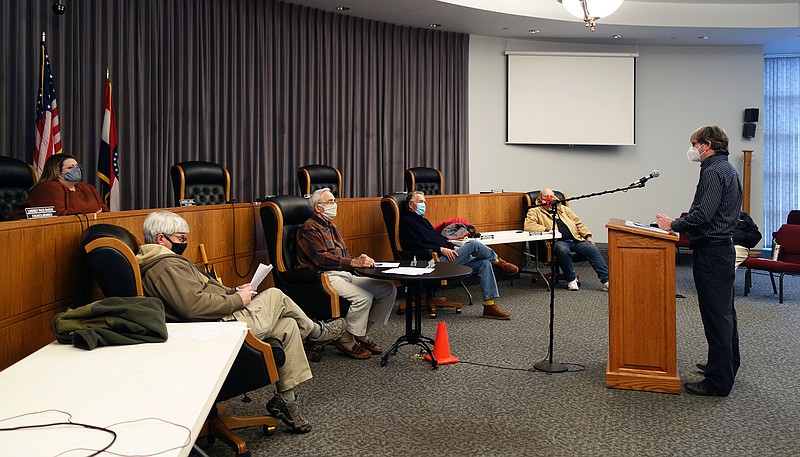The City of Fulton is making progress toward fixing its troubled Smart Grid system, utilities superintendent Darrell Dunlap said.
Dunlap gave an update on the process during Monday's Public Utility Board meeting.
"We've changed our strategy with the Smart Grid," Dunlap said. "We're doing one route at a time."
In the early 2010s, with the help of a U.S. Department of Energy grant, the city installed smart meters for every residential and commercial electric customer within city limits. The cost to install the 5,500 or so meters totaled around $3 million, with the federal government paying for half. But the city has shelled out at least half as much again since then making the system work.
The Smart Grid was supposed to save Fulton employees from having to drive around to manually check each meter in town each month, reducing personnel costs and pollution emissions. It was also intended to help the utility department monitor and quickly pinpoint outages.
In 2019, the entire system crashed, forcing the city to rebuild the servers. The meters still accurately monitored energy consumption - but that information wasn't fed back to the billing system. Instead, employees had to go out and take manual readings.
Since then, the city has changed billing systems and successfully reconnected some of the meters to it. Others still aren't working right - many must be manually reentered into the new database.
Most recently, the city's utility department tested 371 meters of various kinds in the south part of town - an area encompassing several restaurants along South Business 54, as well as residential neighborhoods.
Of those meters, 46 weren't communicating with the billing system. By Friday, that number was down to 28, meaning 92 percent of all meters (and 90 percent of the electric meters) were working properly.
"The U.S. Department of Energy said if we got over 95 percent, that would be great," Dunlap said.
Next, the city will work on meters in the Kleewood area.
"I think we know what to look for in each route," Dunlap said. "We'll see if we can get it working quicker than we did this one."
Fulton Director of Administration Bill Johnson noted the city's exhaustion with Smart Grid problems.
"What's incredibly frustrating is, we've been messing with this for nine years," he said. "This is working in small towns and in large towns, and we just can't get it. At some point it'll be time to say we're going to keep funding this or say we're done and pull the plug."
The system was originally pitched by the DOE as a way for Fulton to eliminate the need for meter readers. That still hasn't happened - in fact, the city has added IT staff to wrangle the Smart Grid, Johnson said.
"We're way beyond a little tired," he added.
Utility board member Charlie James suggested continuing to work at it and seeing "what the next route brings."
Hatton gas line
In late 2020, a company contracted by the City of Fulton finished an integrity study on the 24-mile long natural gas line running between Fulton and a pipeline passing through Hatton. The eight-inch pipe supplies gas to consumers throughout Fulton, and it's at least 15 years old now, Dunlap said.
The contractor flagged any spots with potential issues as anomalies. Dunlap said the GPS coordinates provided by the company were highly accurate.
Of the three most severe anomalies, two have been investigated so far, Dunlap said.
"The coating on the outside of the steel had separated from the pipe," he said.
Those portions of the pipe have been stripped and re-coated.
In total, the city spent around $46,000 on the survey.

